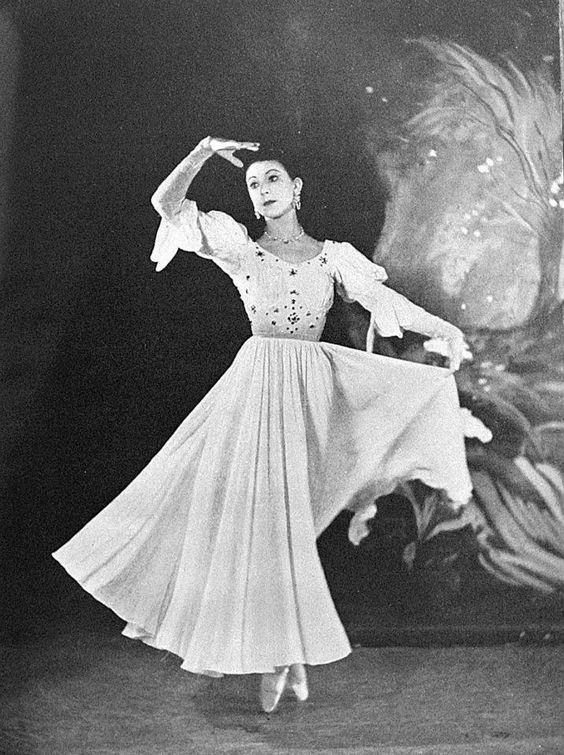In the 1940s Piper had left the Cornish abstraction style of painting he had picked up in the 7&5 Society for the world of neo-romanticism. He started to paint the gothic buildings of his friends houses and really mastered the effect of light. Being able to use light dramatically might have been why he was tempted into design sets for the ballet, The Quest by William Walton, but more of that later.
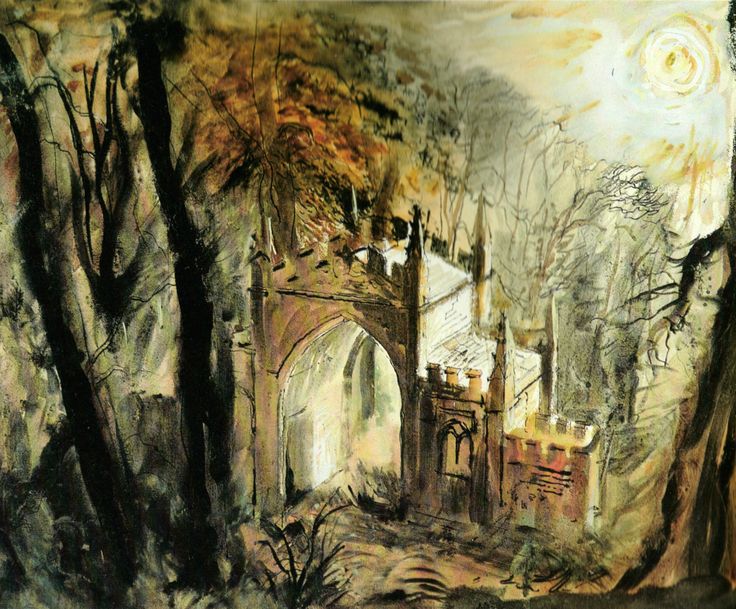
John Piper – The Gothic Archway, Renishaw, 1942
Both Piper and Walton were guests of the Sitwells at the family home, Renishaw. Walton when interviewed at the end of his life remembered himself as a “scrounger” on their company in the 1920s and 30s and that they used him for his talents as a composer and he used them for access to others, such as Stravinsky, but he admitted, they knew everyone. The Sitwell’s were very keen to have creative people around them (rather like the Morrell’s a generation before). In the nature of friendships, collaborations happened.
For Walton and Sitwell this started with ‘Façade – An Entertainment’; a mixture of poems by Edith Sitwell recited over the music of William Walton. Sitwell penned some of the poems in 1918 and music was put to them in 1922, and a public performance the following year. The poems were recited behind the curtain with a band behind. Using a sangaphone. (A Megaphone made of paper mache to project the voice) Edith spoke out her poems in rhythm to the music and all the audience saw was a sheet, with a face painted on it and a hole for the megaphone.
Piper remembered his time at Renishaw in the Second World War as a shelter from chaos, and was also commissioned to paint the hall. Soon he found himself as a good friend of Osbert Sitwell and found the families high-brow conversation an education. In 1942 Edith revived Façade and Piper was commissioned to paint a curtain. Below is a screenprint made in 1987 to the same design as the 1942 performance. The black hole is where the sangaphone was placed.

John Piper – Façade, 1987 (A Screen Print based on the original curtain design)
The façade in Piper’s design was inspired by the entrance front of Eaton Hall in William Porden’s Regency Gothic incarnation. Eaton came into the possession of the Grosvenor family in the 1440s, and the first house on the present site was built in 1675-82. The house was transformed in 1804-14 by William Porden for the 2nd Earl Grosvenor, and in 1823-5 wings were added by Benjamin Gummow. The result was a spectacular Gothic mansion with spiky buttresses, pinnacles, battlements and turrets. The house was remodelled in 1846-51 by William Burn, and in 1869-83 Alfred Waterhouse transformed it into a Wagnerian palace for the 1st Duke of Westminster. This was demolished in 1961-3, leaving only the chapel and stables. A modern house was built in 1971-3, which in turn was transformed in 1989-91 for the present Duke.
Newspaper quote.
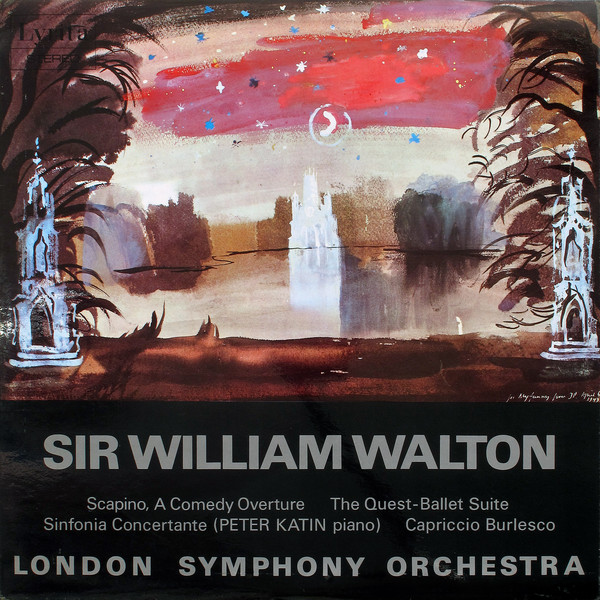
Now back to our Quest. It might have been Façade or just knowing the Sitwells that Piper became exposed to Walton but they ended up working together on The Quest, a ballet, scored by William Walton, designed by Piper with lost choreography by Frederick Ashton in 1943. The ballet, with a scenario by Doris Langley Moore, was based on The Faerie Queene by Edmund Spenser. It was first given by the Sadler’s Wells Ballet company with Margot Fonteyn as the lead dancer.
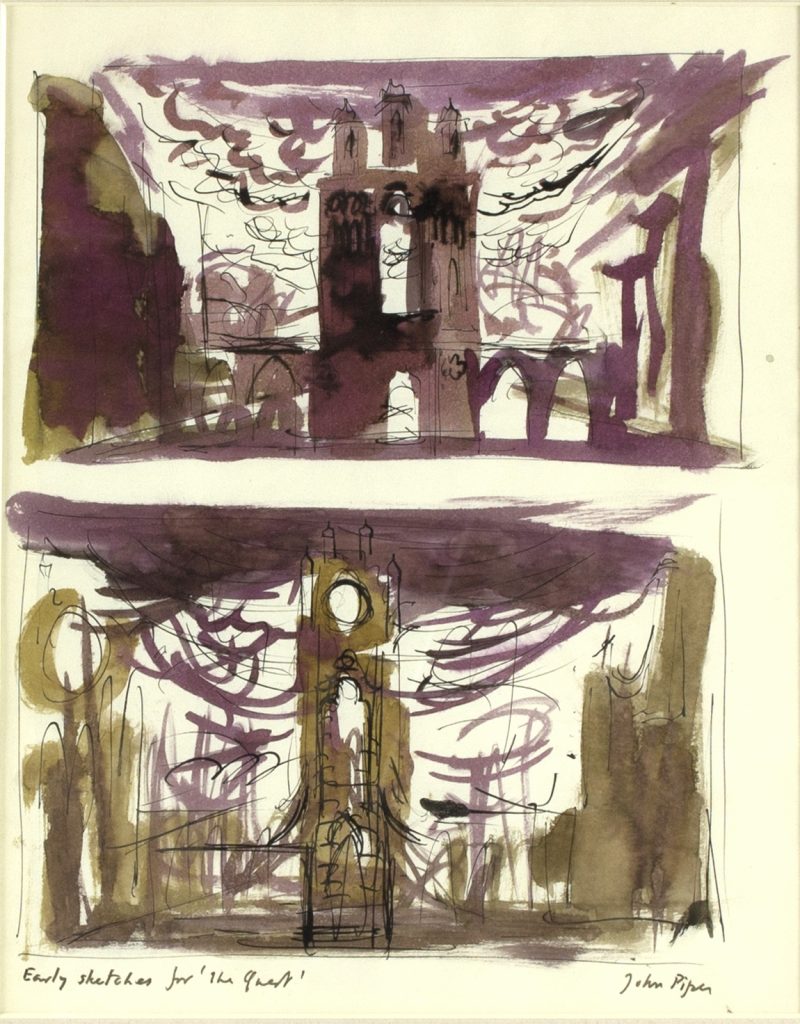
The buildings sketched out in the illustration above were reproduced as the white tower in the centre and early designs for the follies to the side below.
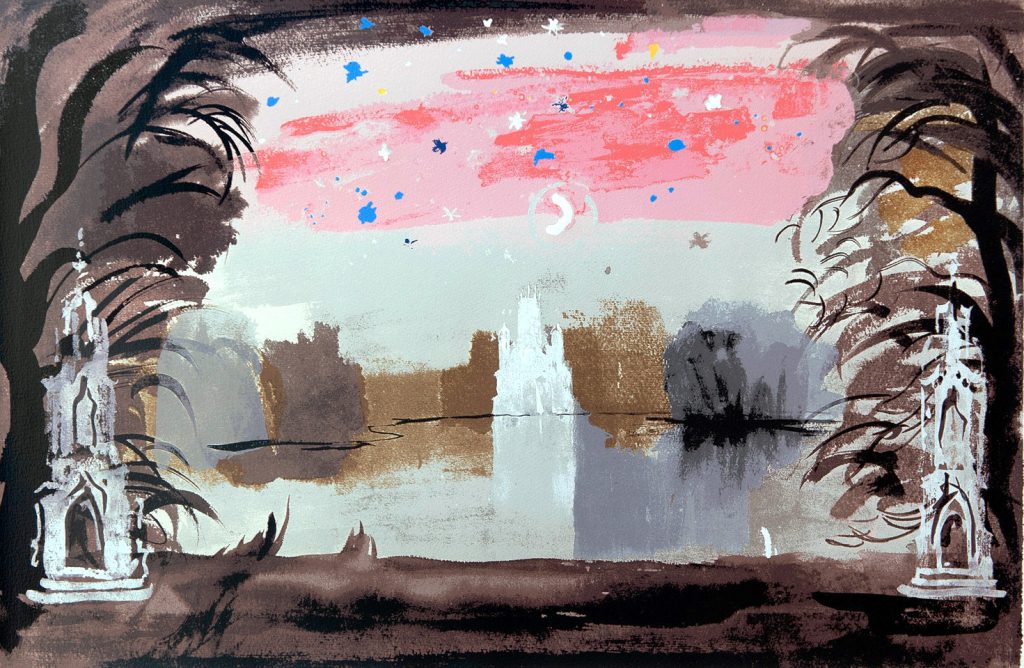
John Piper – The House of Holinesse, 1943
This same image above, like Façade was made into a screenprint in 1986. Below you can see the design in the background of the dancers, with differences to the lake and the sky, the design is mostly accurate to Pipers drawings.
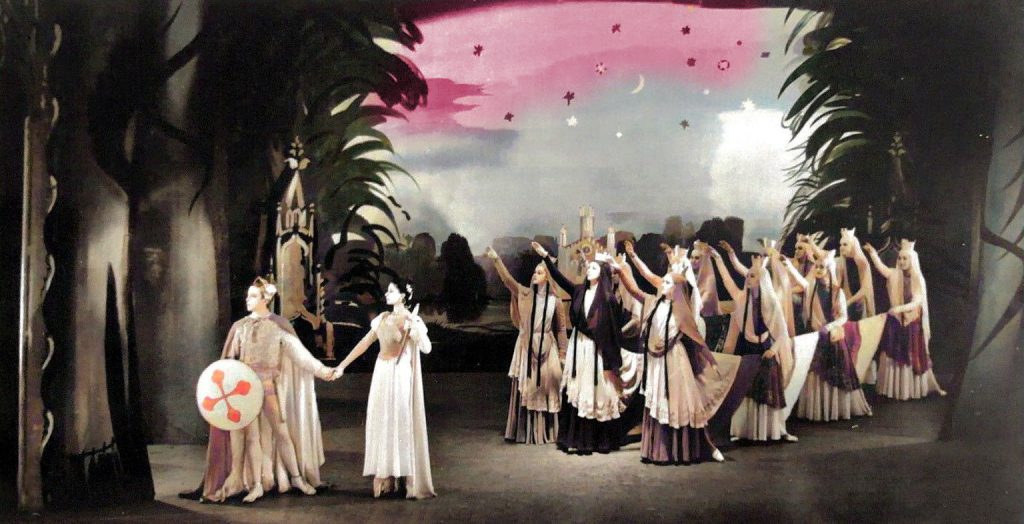

John Piper – The Place of Rocks near the Palace of Pride, 1943
You can see how the designers translated Pipers designs below, the shape of the grotto doors, allowing the players to move on and off the set.

The large leaf design on the left grotto door here shows the scale of the design and how well it was translated for the stage. Here Margot Fonteyn holds and sword above Robert Helpmann.
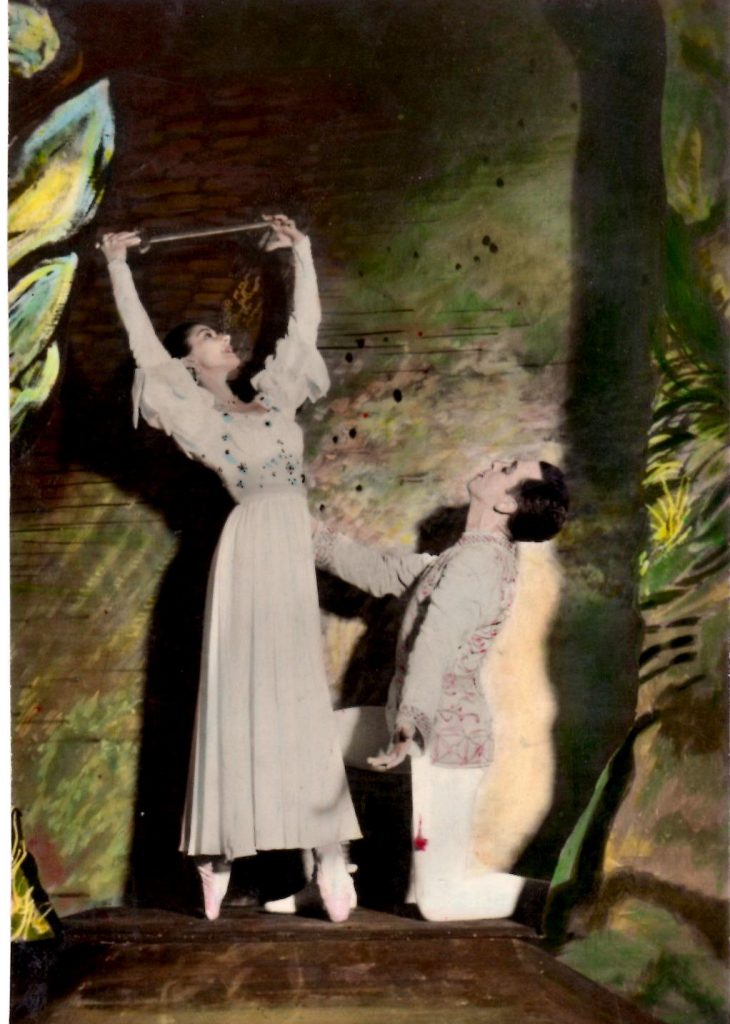
In another scene below you can see how Piper used light for drama on the stage.
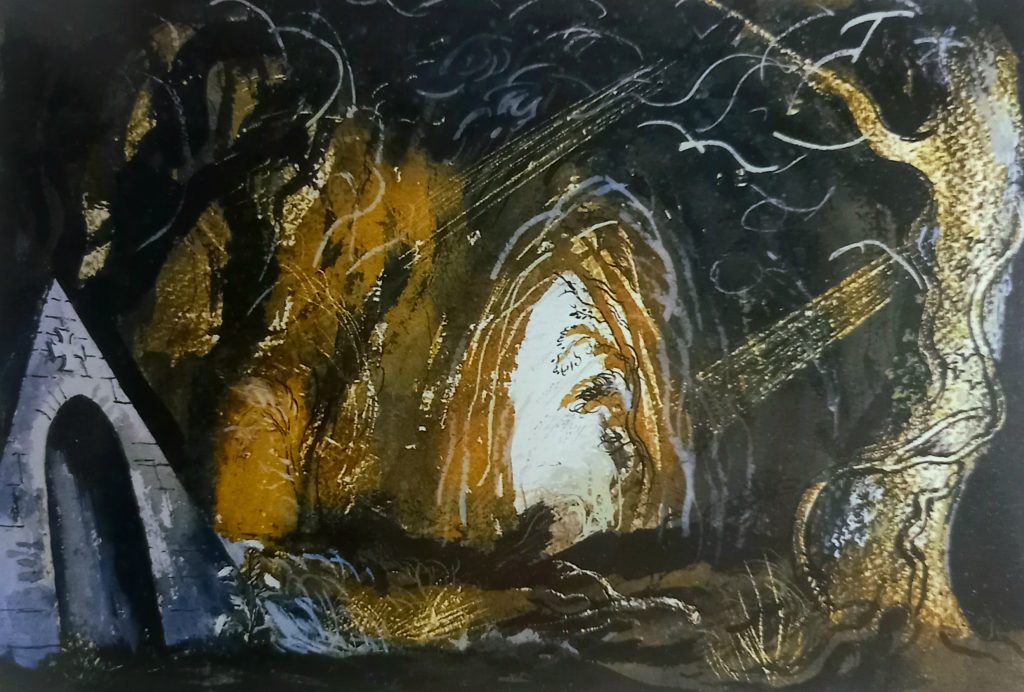
John Piper – The Magician’s Cave, 1943
Below you can just see the wisps of the trees from The Magician’s Cave.
In this last background painting is The House of Pride. The final version became a lot more refined and you can see it in the background of these promotional photographs.
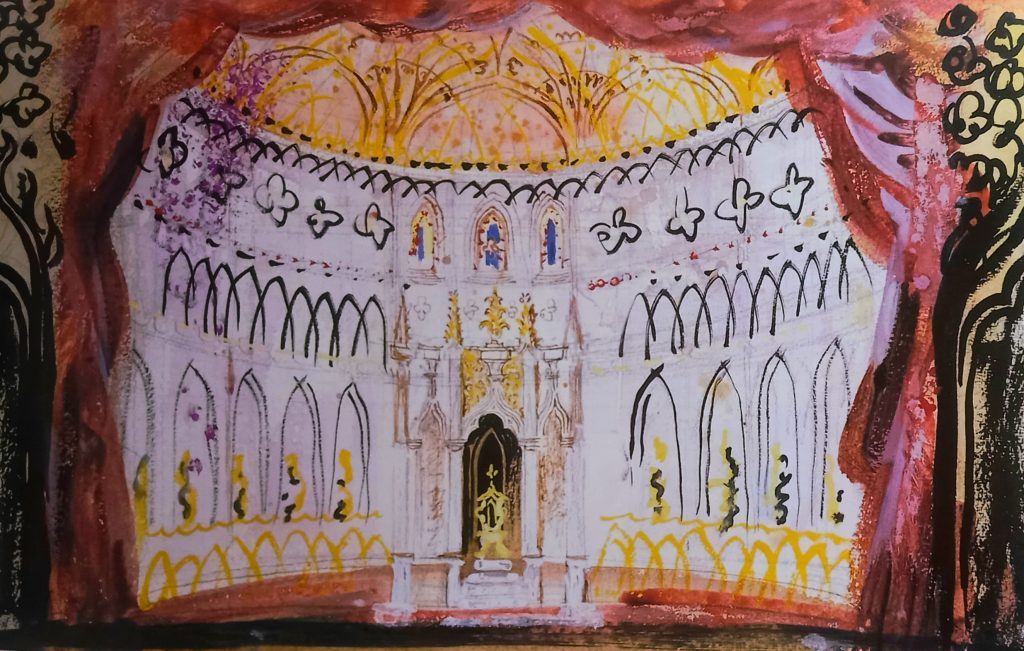
John Piper – The House of Pride, 1943
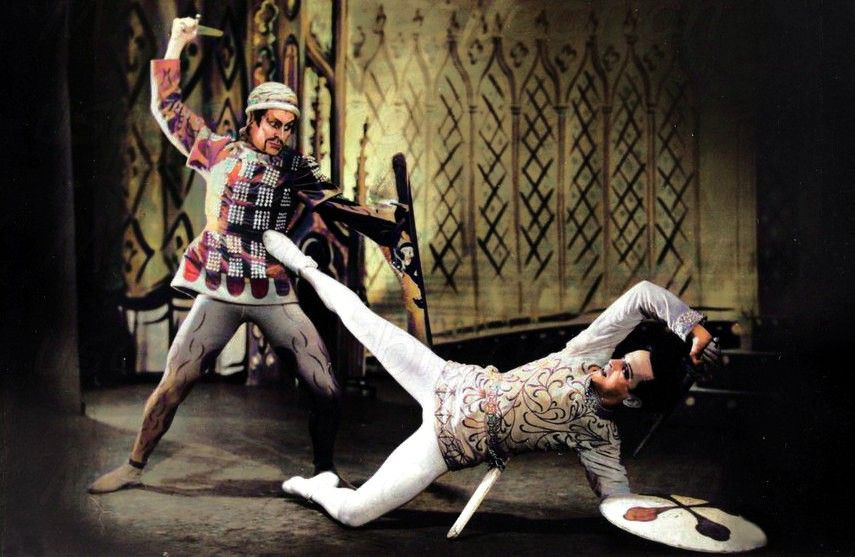
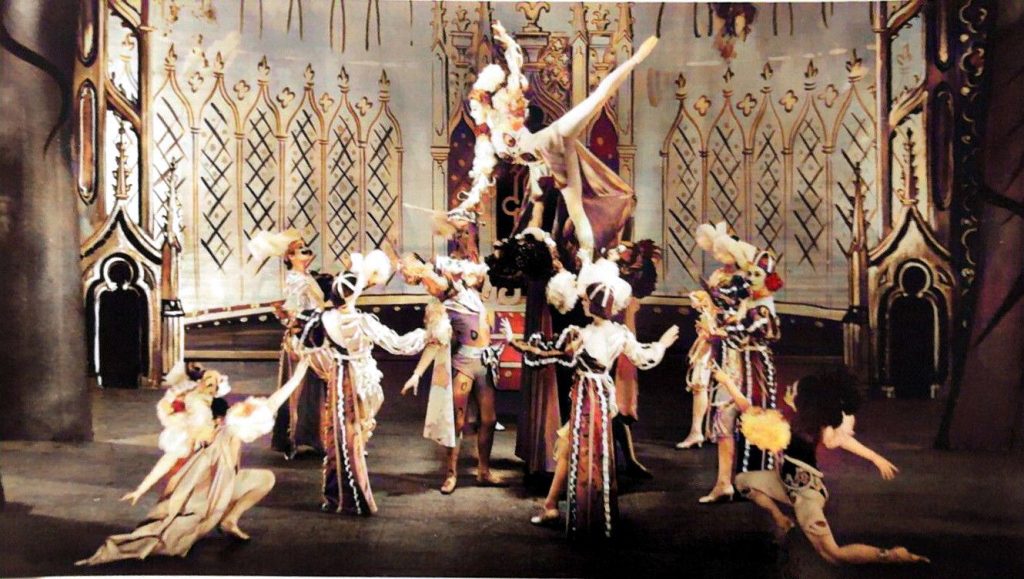
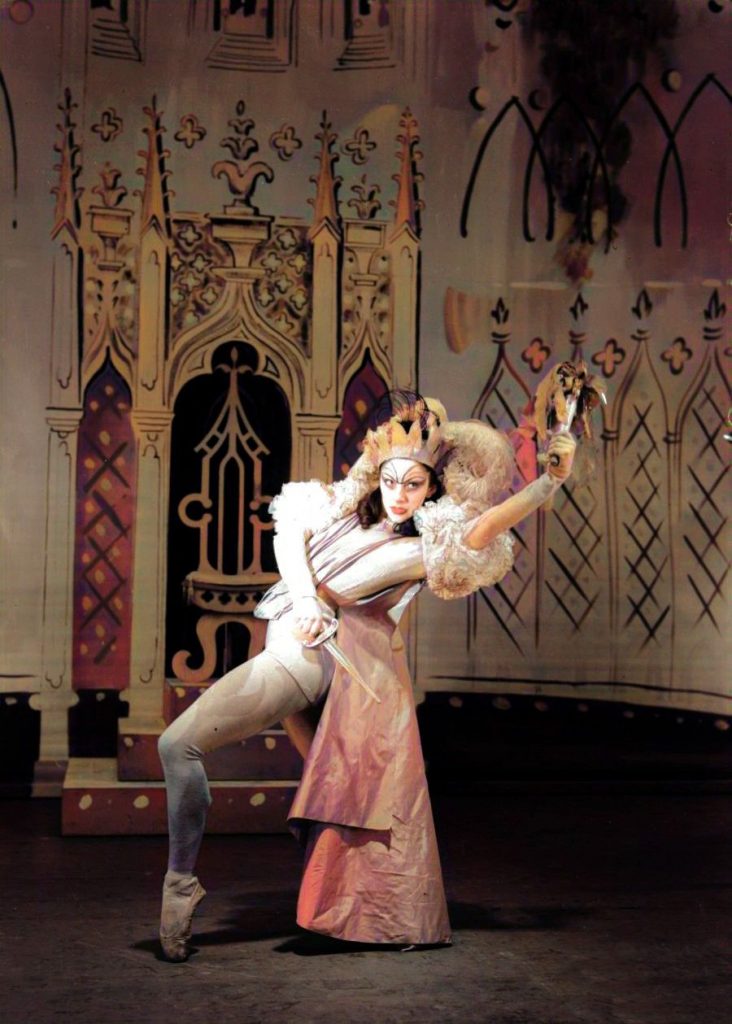
Below is one of the costume designs by Piper for the Ballet. You can see feathers of the head-dress and the ruffals of the arms.
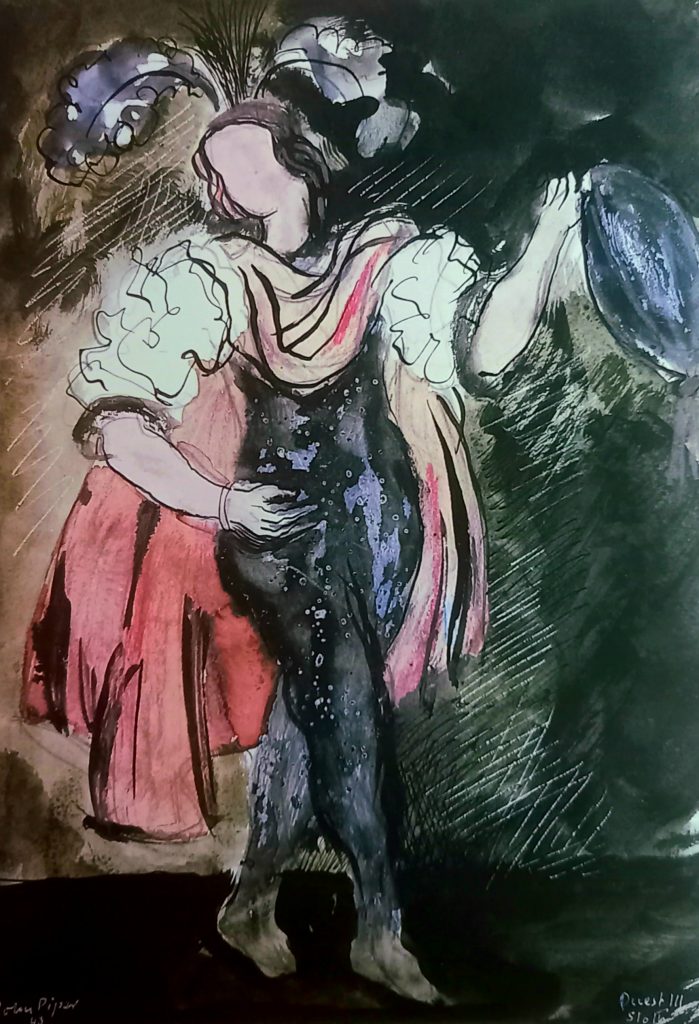
John Piper – Sloth, 1943
